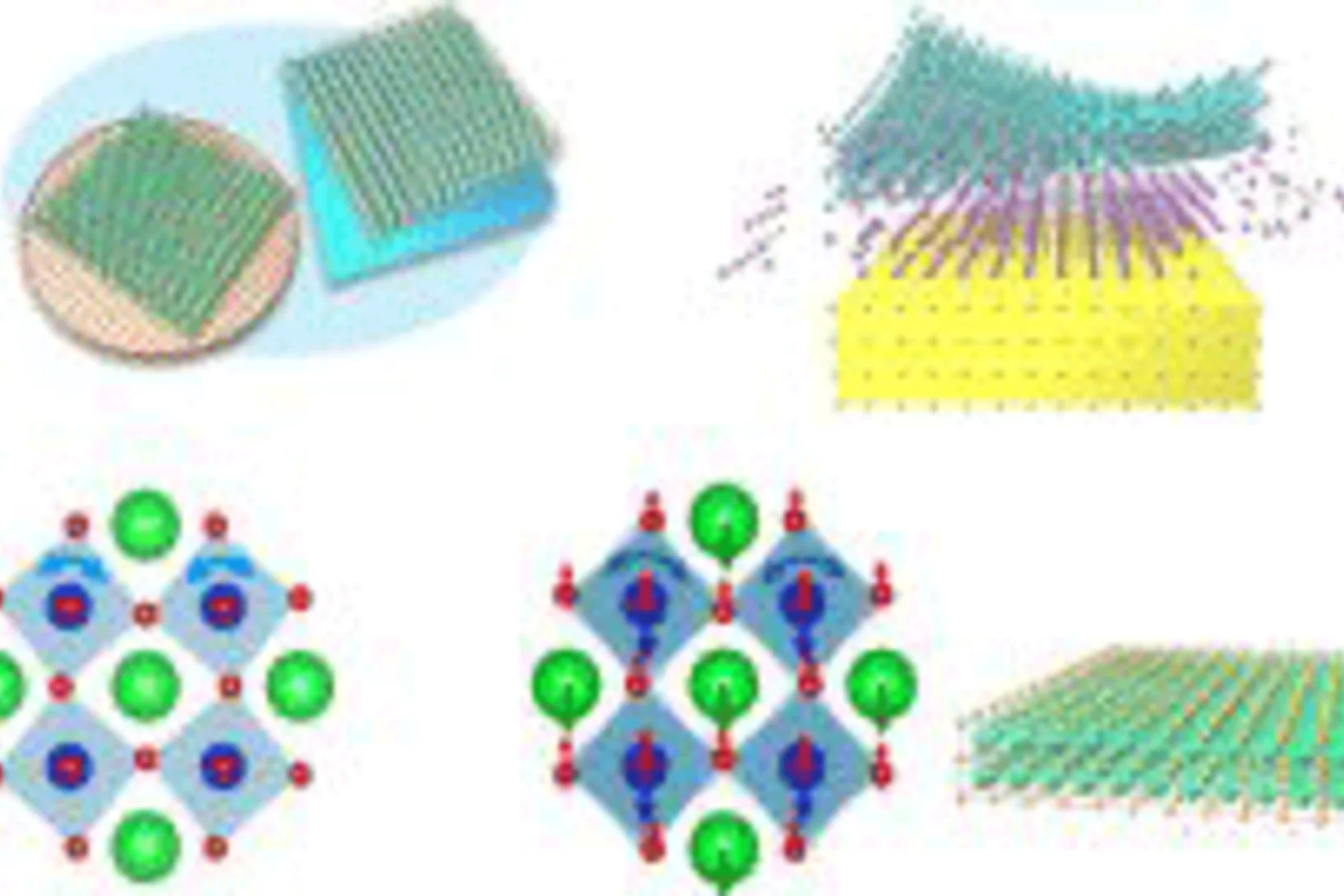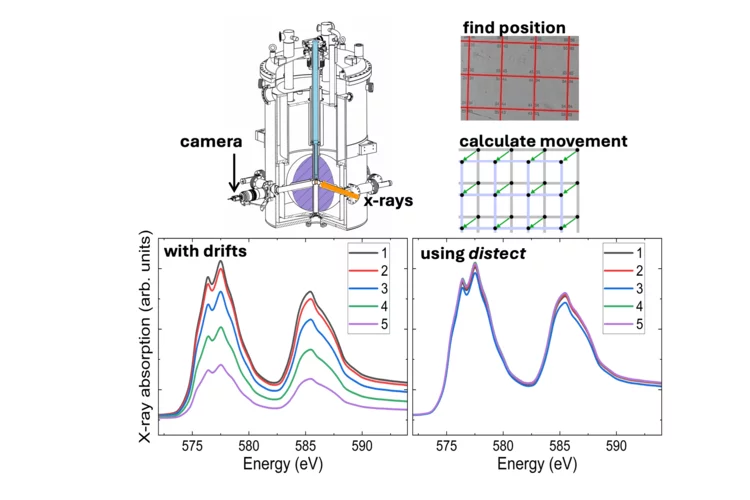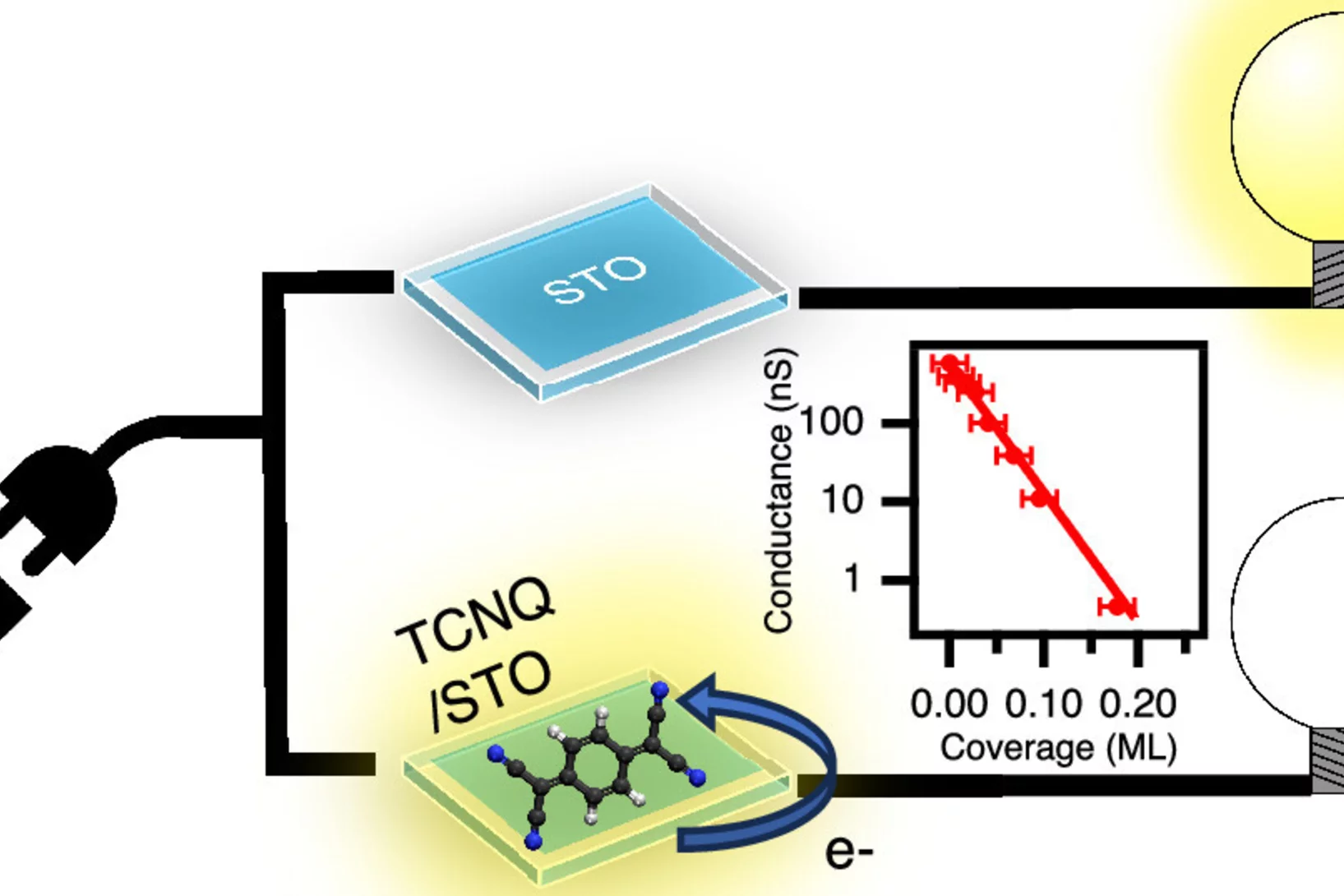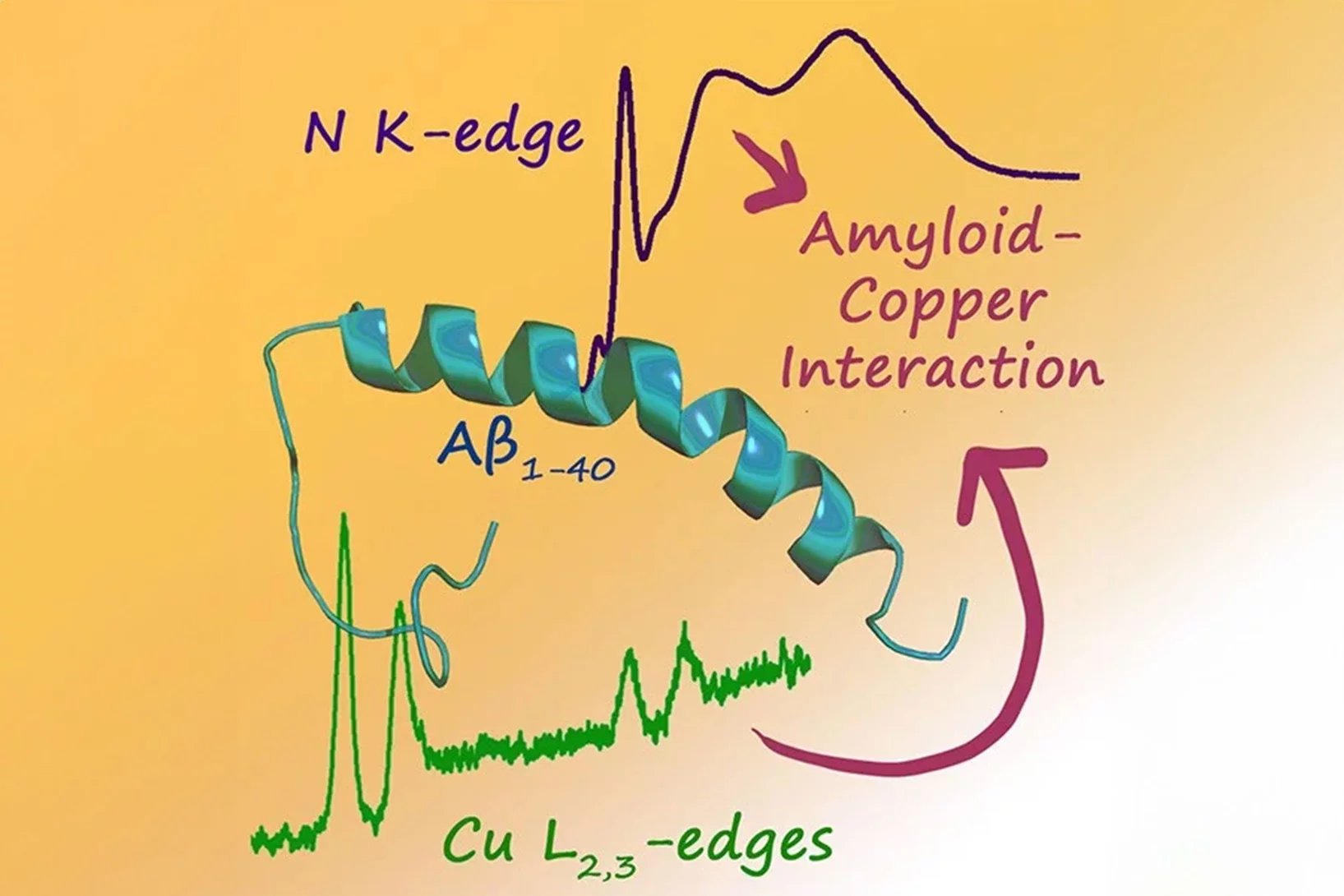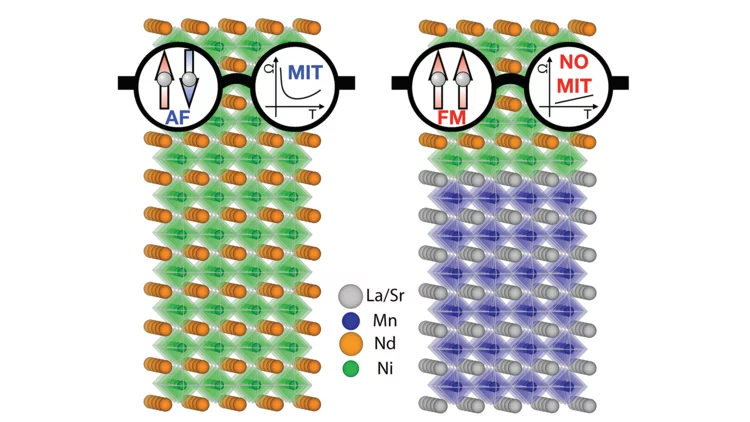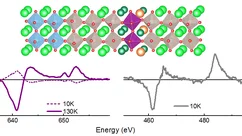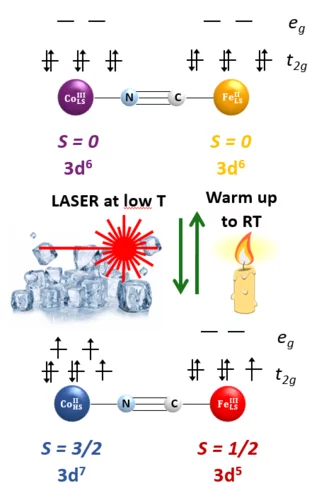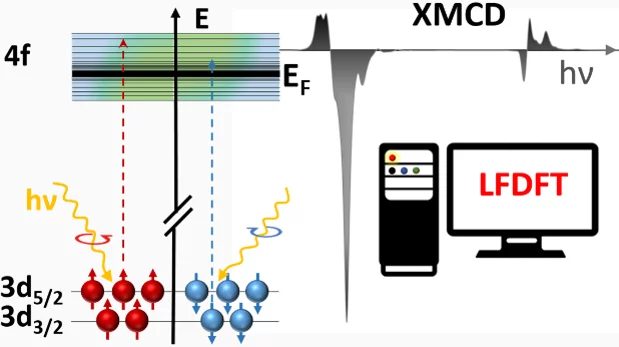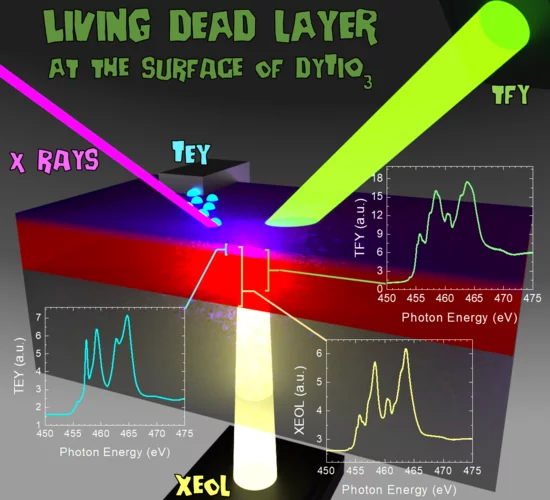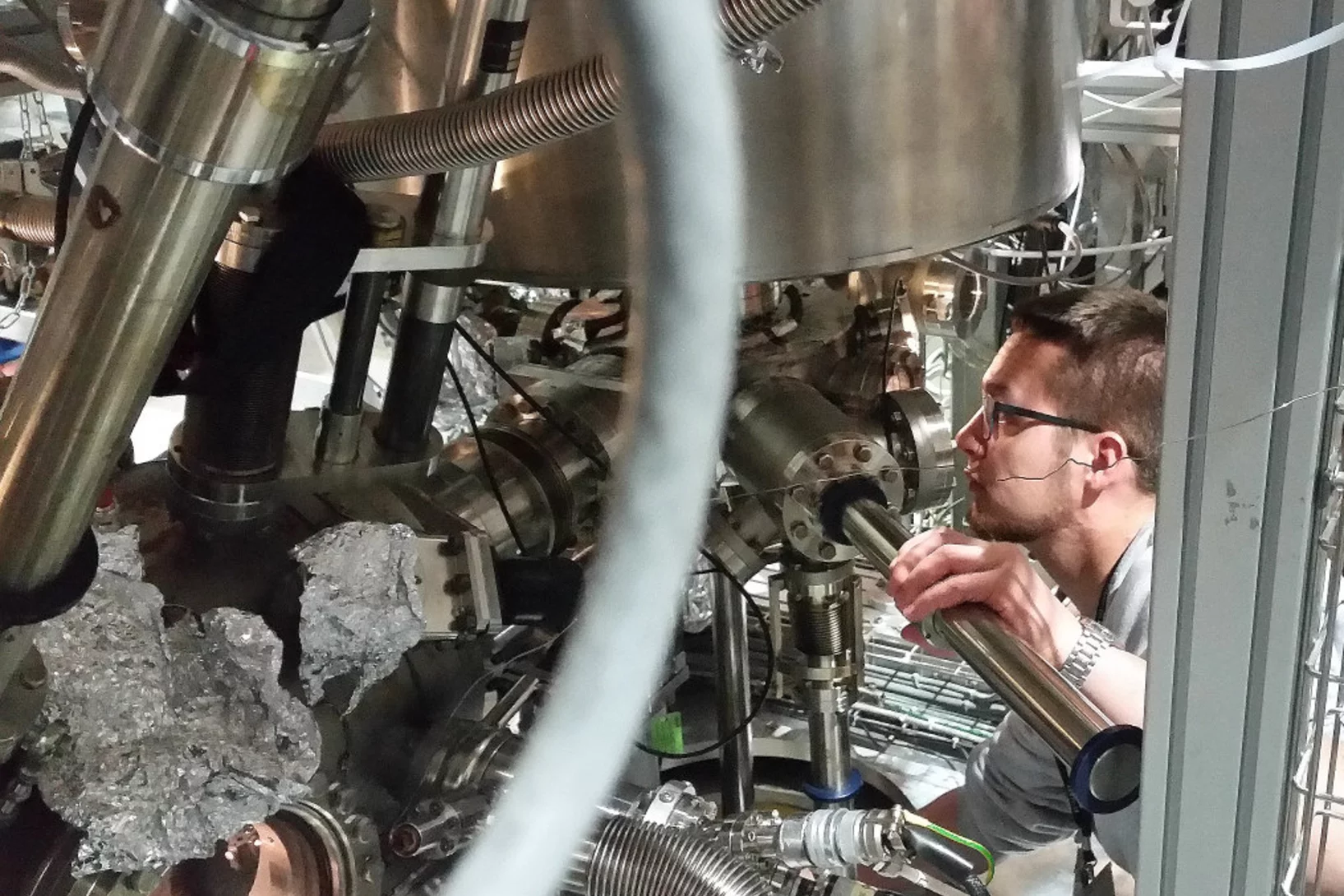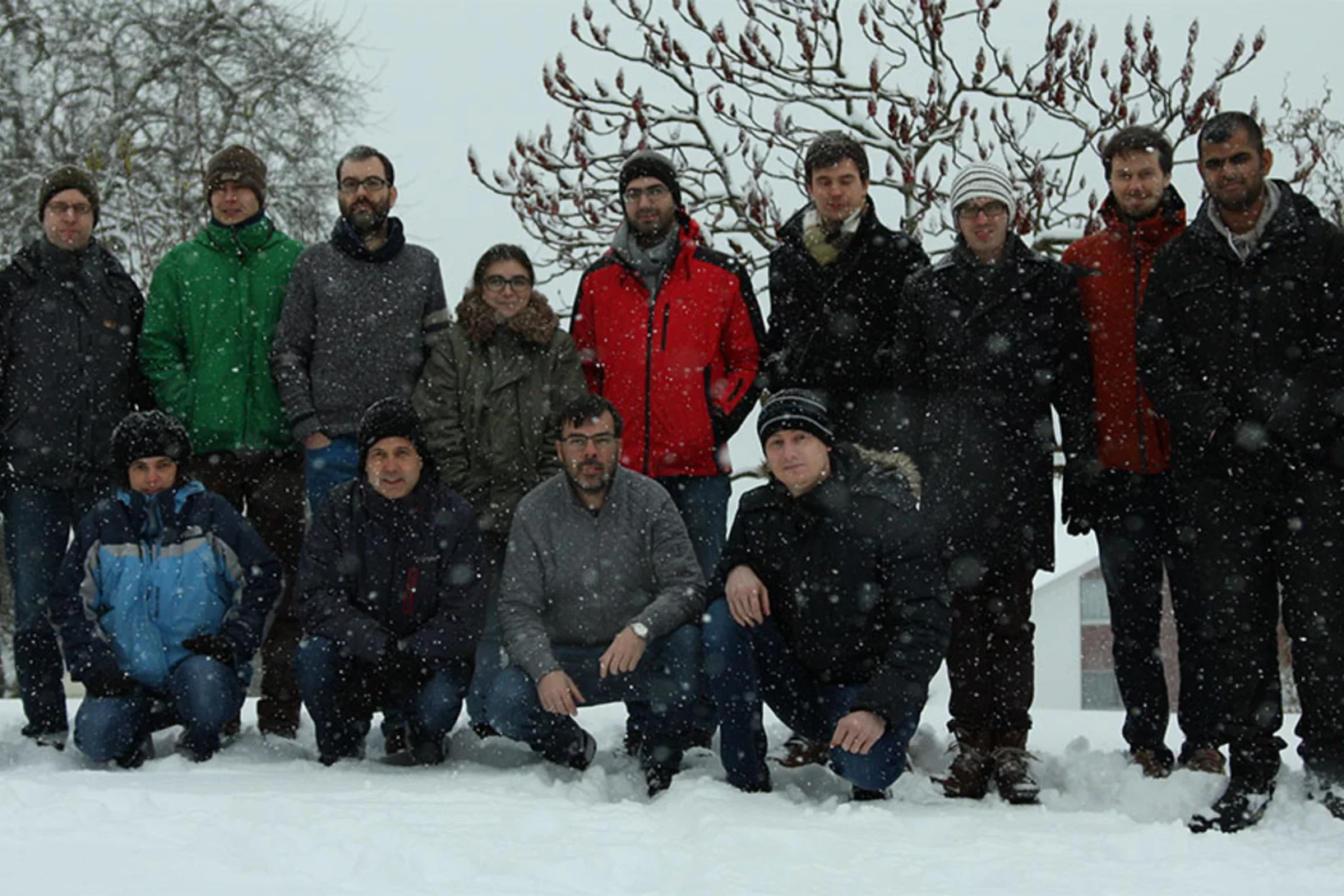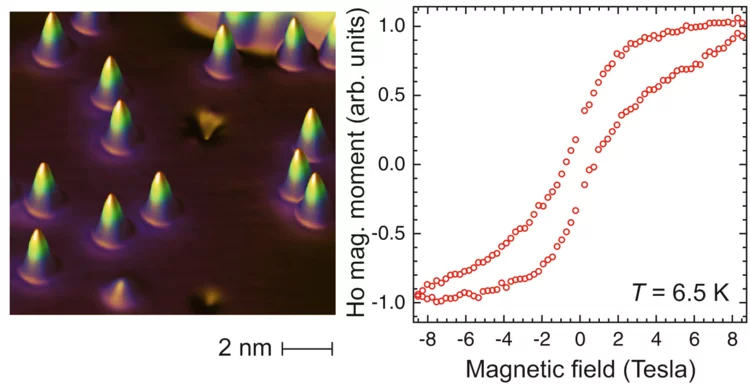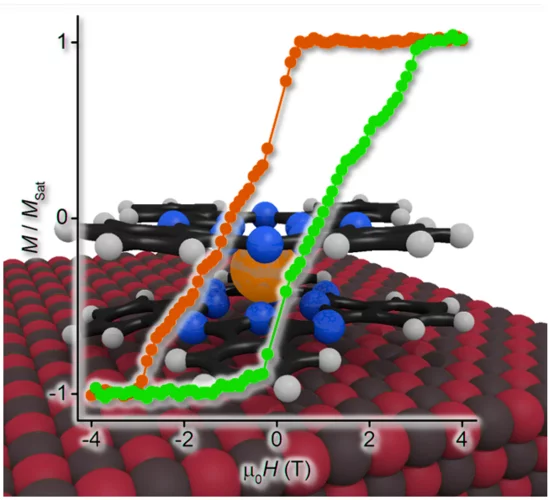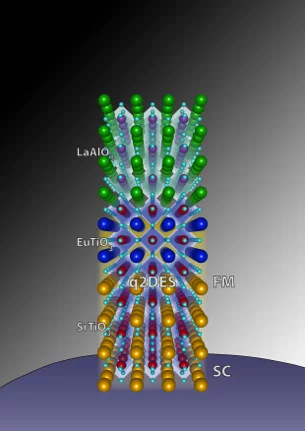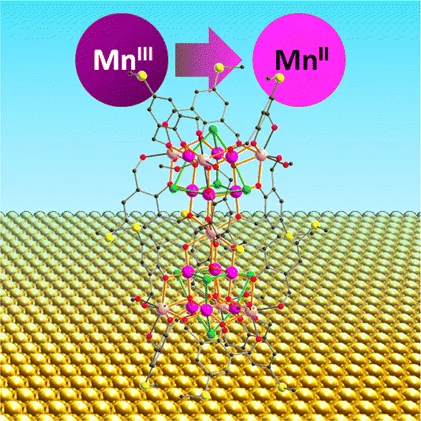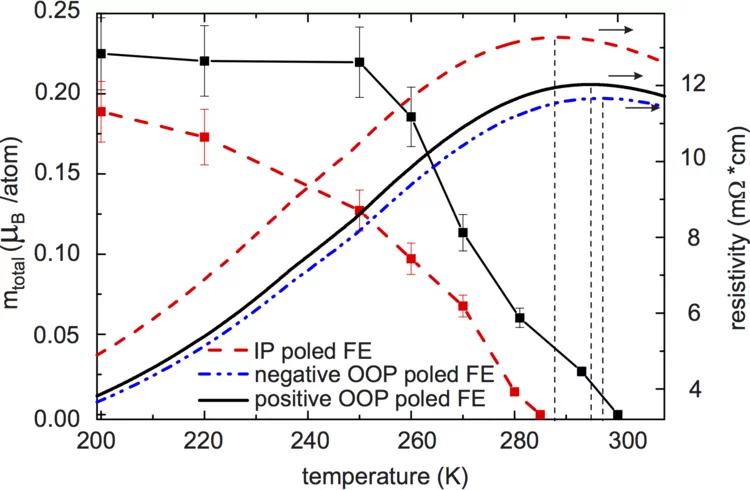Show filters
Antiferrodistortive and ferroeletric phase transitions in freestanding films of SrTiO3
Epitaxially grown thin films are commonly used to strain engineer electronic properties by the choice of a substrate, and therefore do not match bulk properties (leading to properties that deviate from the bulk material). Free standing ultrathin oxide films are expected to preserve the bulk-like properties due to the absence of substrate influence. However, we show that this expectation is not fulfilled with ultrathin free standing SrTiO3, as they get ferroelectric at 80K.
Sample-position tracking using computer vision algorithms
In a collaboration between PSI and the Zurich University of Applied Sciences, a sample position tracking setup based on a computer vision algorithm was developed to automatically track the sample position. A factor of ten improvement on the overlap between consecutive x-ray absorption spectra was obtained when the automatic sample tracking was used.
Switching Off the Surface Conductivity of Strontium Titanate by Non-Volatile Organic Adsorbates
Strontium titanate is a wide band gap semiconductor. Its surface can be rendered conductive by a mild annealing in vacuum. The present study reveals that by deposition of less than a monolayer of non-volatile organic molecules such as tetracyanoquinodimethane (TCNQ) this conductivity can be completely turned off. In view of the small size of TCNQ (ca. 1 nm) this could allow new pathways toward oxide-based electronics.
Discovery of a large unquenched orbital moment in a 2D van der Waals ferromagnet
3d transition metals often exhibit a quenched orbital moment when in a solid state system. Therefore, the proposition of a large unquenched orbital moment for V in VI3 caused some surprise and discussion in the scientific community. Experimental and theoretical works diverge on the fact of whether the orbital moment is quenched or not. In our work we have been able to give an answer this open issue, proposing also a model for the ground state of VI3.
Fingerprint of Copper in Peptides Linked to Alzheimer's Disease
In an interdisciplinary project, researchers from the Laboratory of Nanoscale Biology in BIO and the Laboratory for Condensed Matter in PSD have revealed the reaction between the nitrogen atoms of the amyloid-beta peptide and copper/zinc ions by using soft X-ray absorption spectroscopy.
Vastly Different Morphologies Dependent on the Growth Temperature
Lithium fluoride is an important material which is technologically exploited in spintronics and organic light emitting devices. It turns out that there is a vast difference between the morphologies of ultrathin lithium fluoride grown on the (100) facet of a silver single crystal. At room temperature dendrites are obtained while at elevated temperature lithium fluoride forms square islands. The system is an interesting model to study the crossover between diffusion limited aggregates and island growth.
Magnetic Bistability at a Record High Temperature in a Sub-Monolayer of Endohedral Fullerenes
A team of the Leibniz Institute for Solid State Research (IFW) from Dresden, Germany, led by Dr Alexey Popov has now demonstrated a record blocking temperature of 28 Kelvin at which the magnetic bistability still survives in a submonolayer of a chemically functionalized species of endofullerenes. In this research, X-ray magnetic circular dichroism measurements at low temperatures and high magnetic field at the X-Treme beam line are crucial. The results pave the way toward using such single-molecule magnets as information carriers or magnetic bits.
Creating novel quantum phases via the heterostructure engineering
Within this synergetic collaboration, PSI scientists have investigated the correlation between magnetic and electronic ordering in NdNiO3 by tuning its properties through proximity to a ferromagnetic manganite layer. The main outcome is that the stray magnetic field from the manganite layer causes a novel ferromagnetic-metallic (FM-M) phase in NNO. This work demonstrates the utilization of heterostructure engineering for creating novel quantum phases.
Hindering the magnetic dead layer in manganites
The authors demonstrate the stability of ferromagnetic order of one unit cell thick optimally doped manganite (La0.7Ba0.3MnO3, LBMO) epitaxially grown between two layers of SrRuO3 (SRO). LBMO shows ferromagnetism even above SRO Tc. Density Functional Theory calculations help understand the reasons behind this interesting result.
Understanding the Superior Stability of Single-Molecule Magnets on an Oxide Film
A research team centered at the X-Treme beam line at the Swiss Light Source has demonstrated that spin-phonon coupling plays a major role in enhancing the magnetic stability of so-called lanthanide phthalocyanine double decker single-molecule magnets. This understanding is important in order to employ such molecules in future spintronics applications.
Photoswitching in a Molecular Cube
Niéli’s paper is accepted in the Journal of Physical Chemistry Letters! We use X-ray absorption spectroscopy and X-ray magnetic circular dichroism to watch directly how the Co and Fe ions in a molecular cube change their oxidation states and turn from diamagnetic into paramagnetic units upon light irradiation.
New Method for Calculating Soft X-ray Magnetic Circular Dichroism Spectra
Scientists have demonstrated in a combined theoretical and experimental effort that the new ligand-field density functional theory method (LF-DFT) can be used to calculate the X-ray absorption spectra (XAS) and X-ray magnetic circular dichroism (XMCD) of lanthanide compounds from purely structural input.
Revealing a Living-Dead Magnetic Layer
A peculiar magnetic “dead layer” is detected at the surface of thin films of DyTiO3, a ferrimagnetic Mott insulator. Depth dependent X-ray absorption measurements performed at the X-Treme beamline in the Swiss Light Source indicate that this layer is associated with a deviation of the Ti valence from 3+ toward 4+ at the film surface, suppressing the magnetic coupling between Ti ions and unleashing a strong paramagnetic response from uncoupled Dy ions.
HERCULES at the Swiss Light Source
In the week of March 18-23 PSI welcomes 20 PhD students and postdocs taking part in the HERCULES 2018 school on Neutron and Synchrotron Radiation. They will attend lectures and perform two days of practical courses at several beam lines of the Swiss Light Source.
Wafer-thin Magnetic Materials Developed for Future Quantum Technologies
For the first time, researchers have produced a wafer-thin ferrimagnet, in which molecules with different magnetic centers arrange themselves on a gold surface to form a checkerboard pattern. Scientists at the Paul Scherrer Institute, in collaboration with their research partners, published the findings in the journal Nature Communications.
Annual Retreat of the Microscopy & Magnetism Group
The Magnetism and Microscopy group has met for its annual retreat meeting in Lungern 11- 15.1.2017 (in the central mountain region of Switzerland) for extensive discussions on its science program. As for other years, after some general introductory lecture into the techniques used, current and future projects have been presented by the PhD students, postdocs, and scientists as well as from guests who collaborate with the group. Discussion went into the time where dinner has been prepared together, followed by some leisure activities on Saturday.
The Smallest Magnet
Single holmium atoms adsorbed on few monolayers of magnesium oxide are extraordinarily stable magnets. They retain a significant fraction of their magnetization when the external magnetic field is switched off. This has been shown recently in a study combining x-ray magnetic circular dichroism performed at the Swiss Light Source (SLS) and at the European Synchrotron Radiation Facility (ESRF) as well as scanning tunneling microscopy. The results open perspectives of storing and processing information at ultrahigh density.
Magnesium Oxide Boosts the Hysteresis of Single-Molecule Magnets
Researchers from PSI and EPFL have demonstrated that the magnetization hysteresis and remanence of TbPc2 single-molecule magnets drastically depends on the substrate on which they are deposited. If a few atomic layers thick magnesium oxide film grown on a silver substrate is used, a record wide hysteresis and record large remanence can be obtained. Single-molecule magnets are attractive for molecular spintronics applications such as information processing or storage.
Magnetoelectroelastic control of magnetism
X-ray magnetic circular dichroism at the Co L3,2 edges measured at the X-Treme beamline, SLS and at the Advanced Light Source, evidence that three distinct electric field driven remanent magnetization states can be set in the Co film at room temperature. Ab initio density functional theory calculations unravel the relative contributions of both strain and charge to the observed magnetic anisotropy changes illustrating magnetoelectroelastic coupling at artificial multiferroic interfaces.
Tunable spin polarization and superconductivity in engineered oxide interfaces
A new kind of 2DEG is found by inserting two atomic layers of the antiferromagnetic and insulating compound EuTiO3 between LaAlO3 and SrTiO3. The 2DEG is found to exhibit besides a superconducting ground state, a strong spin-polarization. The magnetism of Eu and Ti was studied by XMCD at the X-Treme beamline in SLS.
Interfacial Control of Magnetic Properties at LaMnO3/LaNiO3 heterostructures
Using a X-ray magnetic circular dichroism measured at the X-Treme beamline, SLS, in conjunction with X-ray reflectivity measured at the SEXTANTS beamline, SOLEIL, the authors show that the degree of intermixing at the monolayer scale allows interface-driven properties such as charge transfer and the induced magnetic moment in the nickelate layer to be controlled.
Reduction of Mn19 Coordination Clusters on a Gold Surface
The surface-induced changes of the oxidation state and magnetic properties of Mn ion clusters have been probed by X-ray absorption spectroscopy and X-ray magnetic circular dichroism.
Control of Tc in La0.7Sr0.3MnO3 via piezostrain
X-ray magnetic circular dichroism measurements evidence a 10K shift of the magnetic Curie temperature for La0.7Sr0.3MnO3 deposited on the piezoelectric substrate [Pb(Mg1/3Nb2/3)O3]0.68−[PbTiO3]0.32 (011) for two different remanent piezostrain states.

